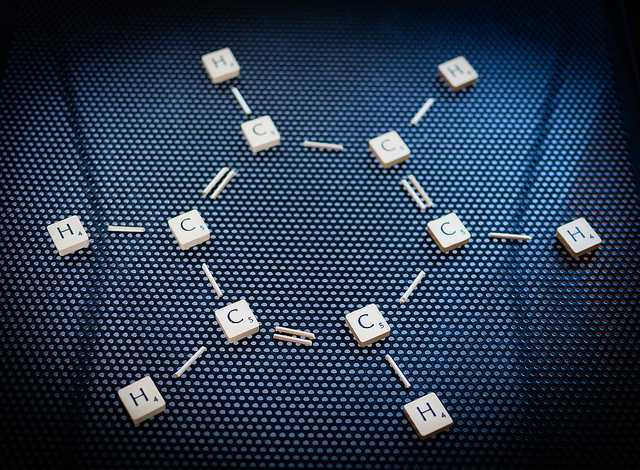
Photo by crsan
Silver is the second most precious metal, right after gold. This element has special properties and for that reason deserves a good look. For example, pure silver is the best conductor of electricity and heat of all the metals. Silver is also the best reflector of visible light. This is the reason why it is commonly used to make mirrors.
Pure silver is too soft for products such as tableware and jewelry. The finest knives and forks of your family are most likely sterling silver, which is an alloy of 7.5% of copper and 92.5% of silver. This metal is also used in some batteries and electronics. Silver has a number of uses and in this article, we will mention all the important ones.
1. Uses in electronics
The number one use of this metal is in electronics. Its unsurpassed electrical and thermal conductivity among metals means silver can’t easily be replaced by less expensive materials. Small quantities of this metal are used as contacts in electrical switches. Whether turning on a microwave using a membrane switch or turning on a bedroom light using a conventional switch, the result will be the same – the current passes through only when the contacts are joined. Silver nitrate is produced by dissolving pure silver in nitric acid, which can be formed into flakes or powder. This material can be fabricated into silver pastes or contacts.
Silver paste has a number of uses, such as the rear defrost in many cars and the membrane switch already mentioned. Furthermore, silver has its place in consumer electronics. Plasma TV sets can rely on silver for more than just the on-off switch. If it has a silver electrode, it will give the HD images. Silver is also used in batteries that employ silver zinc or silver oxide alloys. This high-capacity, light-weight batteries perform better at high temperature compared to other batteries. Silver-zinc batteries are an alternative to lithium batteries for electric cars and laptop computers. Silver-oxide is used in batteries that power watches and cameras, as well as aerospace and defense applications.
2. Uses in energy
Silver paste is often used to make solar panels. It contacts printed onto photovoltaic cells capture and carry electrical current. When energy from the sun impacts the semiconducting layer of the cell, the current is produced. This is one of the fastest-growing uses of silver. Its reflectivity gives silver another role in solar energy. Silver reflects solar energy into collectors that use salts in order to generate electricity.
3. Uses in chemical production
This metal acts as a catalyst in order to produce 2 important chemicals – formaldehyde and ethylene oxide. Formaldehyde is used to make resins and solid plastics and as a protective coating. Ethylene oxide is used to produce flexible plastics such as polyester and molded plastics such as plastic handles.
4. Uses in coins and investments
Along with gold, silver has traditionally served as the metal used in coins. Being a precious metal, silver is valuable and rare, making it a convenient store of wealth. People used to accumulate their wealth in the form of silver coins, but today they invest this precious metal in investment-grade silver bullion. Silver melts at a relatively high temperature and has high luster, meaning that it can last, and the fact that is has high luster makes silver very attractive.
5. Uses in silverware and jewelry
Silverware and jewelry are two other traditional uses of this precious metal. Reflectivity, malleability, and luster make silver a beautiful choice. Silver is very soft, and for that reason, it must be alloyed with base metals, such as copper. This metal can resist corrosion and oxidation, but it can tarnish. However, with a little polish, silver can shine for a lifetime. Silver is a standard for fine dining and a popular choice for jewelry because it is less expensive than gold.
6. Uses in medicine
By absorbing oxygen silver ions act as a catalyst, which kills bacteria by interfering with their respiration. Silver had an essential role in medicine for thousands of years, due to its antibiotic property, along with its non-toxicity. Silver foil was wrapped around wounds to help them heal before the widespread use of antibiotics, and colloidal silver as well as silver-protein complexes were applied or ingested topically to fight illness. Today, the demand for silver in hospitals is increased, due to the presence of antibiotic-resistant superbugs. Small amounts of silver can coat medical equipment and hospital surfaces to prevent the spread of pathogens. Silver in wound dressings, surgical equipment, and ointments protect wounds from infection. Silver ion treatments can allow regeneration of damaged tissue and heal bone infections.
7. Other uses
There are a number of traditional uses of silver. Silver has been used to plate instruments, such as flutes. Today, this metal is one of a number of options for replacing toxic chromate copper arsenate as a wood preservative. Silver-based ionic liquids are used to clean up petroleum waste products. Silver metal glass offers durable strength which resists deformation. It seems that silver has as many uses as people’s imagination can develop.



